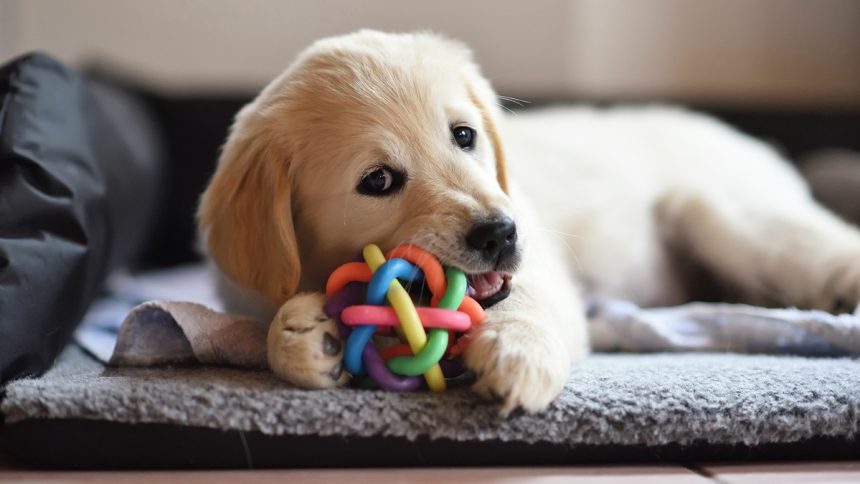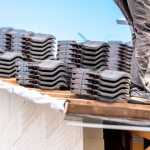While a new puppy is incredibly rewarding to raise and endlessly cute, they can be challenging. Akin to raising a toddler at times, you want to be prepared when bringing a new dog home. Raising a new puppy involves understanding your dog’s signals and ensuring they are fed proper pet food and are comfortable.
A happy, healthy dog takes effort. Here is where to start.
Maintain a List of Essentials
Stock up on essential dog supplies and check your inventory regularly. Include pet food, extra dog bowls, toys, grooming tools, puppy poop bags, and more. Be prepared to order, reorder, and replace items from a pet store as time goes on.
Be Patient with Bathroom Visits
Take your new puppy outside every 1-2 hours to train them to use the bathroom outdoors rather than indoors. Try to bring them to the same area each time for bathroom breaks, and maintain this consistency as you train them. Reinforce positive habits and reward success with praise and treats. This improves the effectiveness of potty training.
Choose Your Best Pet Food
Find the right pet food for your dog. This involves knowing your puppy’s breed, size, and age. Specific dogs need specific nutrients to grow. Consider any special dietary needs your new puppy may have. Be sure to offer them balanced needs to give your dog a healthy coat, strong bones, and energy throughout their day.
Limit Exposure To Human Food
Dogs require high-quality pet food formulated for dogs, covering the basics of protein, carbs, and overall nutrition. A new puppy may need a more calorie-dense formula to support its metabolism. Be careful with human food, as many of these can cause upset stomachs or toxic reactions. Chocolate and grapes are two examples of human foods that are highly dangerous to dogs.
Come Up with a Schedule
Your dog should have a daily schedule. Ensure they are walked regularly and fed small, frequent meals on a recommended schedule. This keeps your dog well-exercised and fed, supporting its overall quality of life.
Socialize Your Dog
Expose your dog to various environments, such as parks, stores, busy streets, etc. This will help familiarize them and help them adapt to different sights, smells, and sounds. Introduce your new puppy to other dogs at the dog park. Supervise these interactions to ensure there is no fear or aggression. Start gradually introducing them to other dogs and people, as one can easily overwhelm a dog with too much stimulation at once.
Puppy-Proof Your Home
Remove hazards from your home environment that may be dangerous to your dog. A young puppy will naturally be curious, want to explore, and may do things they’re not supposed to do. Do what you can to puppy-proof your home.
Hide electrical cords, device cables, and wires a new puppy may chew on. Remove toxic plants from your home. Many common houseplants can be very toxic if a pet ingests any part of it.
Secure cabinet doors shut so a dog cannot dig into trash bins or access chemical cleaning supplies. Be careful with small objects or décor pieces, as some new puppies may be exceptionally curious about them and want to chew on them.
Designate a Safe Space for Your Puppy
Provide your puppy with some time to settle in and a designated cozy area. This is often a dog bed inside a crate or a gated-off room accessible only to your dog. Encouraging your puppy to go to its safe space can make it feel secure in an unfamiliar environment or when overly stressed.
Crate Training Is Strongly Encouraged
Introduce your dog to its crate in a positive way. Never use the crate as a punishment. Keep it positive. Encourage your puppy to explore its crate. Place treats and toys inside. Please put them in briefly to get them used to it. Try to use the crate when you can for naps and bedtime. Eventually, your new puppy will become second nature to use its crate.
Research Your Dog’s Breed
Every breed is different. Research the personality traits of your puppy. Look at other peoples’ experiences with this type of breed. Some breeds are more high-energy, while others are not. Understanding your dog’s breed allows you to understand better what they need in terms of play, exercise, and activity.
Teach Basic Commands
No new puppy comes fully trained and knows simple commands. This is on the pet owner to reach. Teach your dog how to sit, stay, and come. Do this with treats and praise. A new puppy learns best by positive reinforcement. When training, only use short sessions to start, limiting to 5-10 minutes. Repetition maximizes retention. Be consistent in using the same words and gestures for each command.
Lynn Martelli is an editor at Readability. She received her MFA in Creative Writing from Antioch University and has worked as an editor for over 10 years. Lynn has edited a wide variety of books, including fiction, non-fiction, memoirs, and more. In her free time, Lynn enjoys reading, writing, and spending time with her family and friends.















